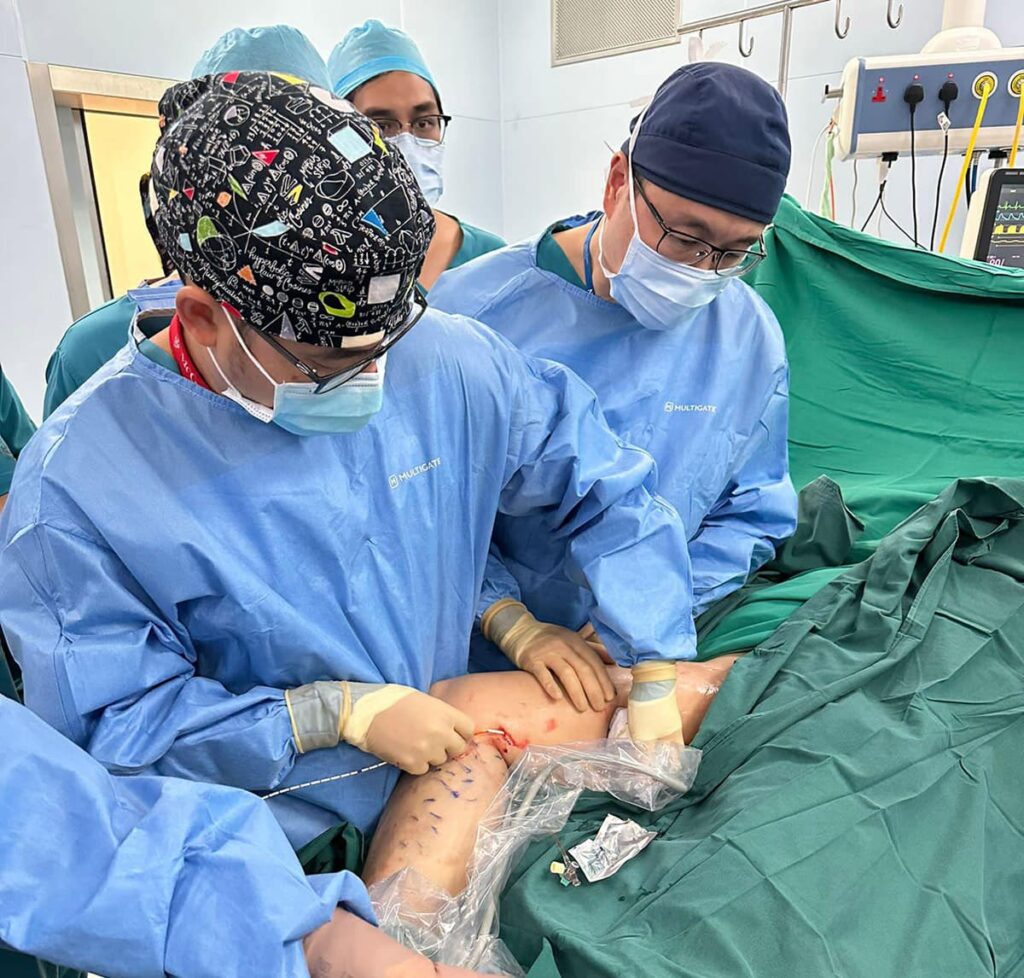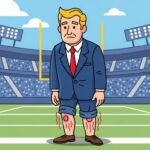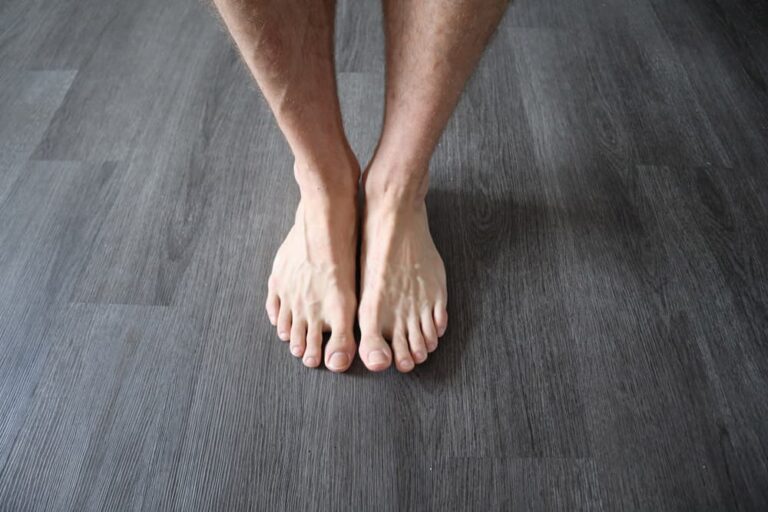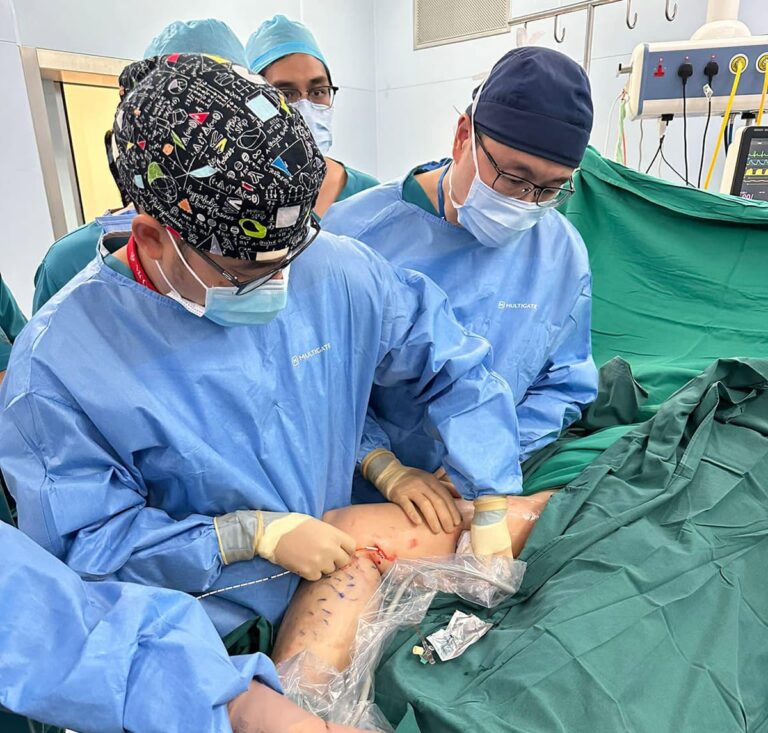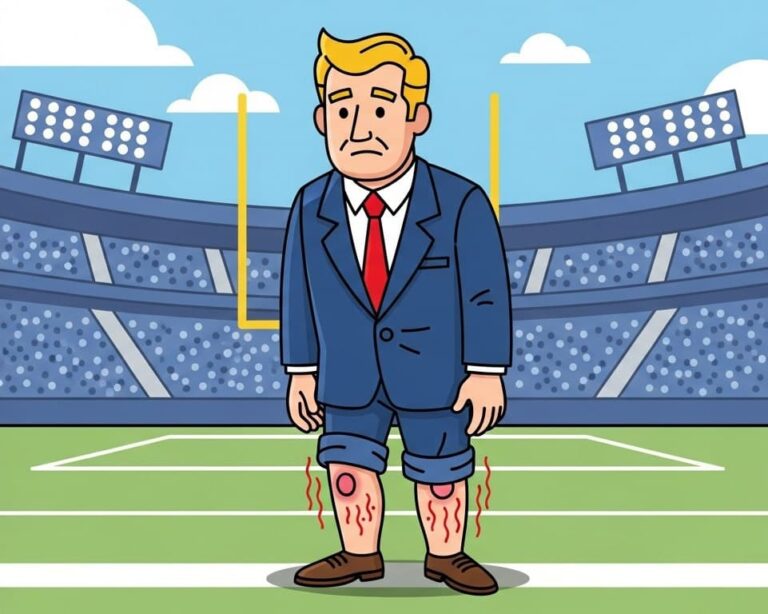Recently a 65 year old gentleman was seen in my clinic. He had presented with a few month history of worsening swelling and aching in his left lower thigh and calf. He also had dilated varicose veins in the same leg for a few years and noted it had become more prominent and throbbed with standing and activities recently. All this was significantly affecting his quality of life.
After undergoing a thorough history, physical exam and a duplex ultrasound of his left leg, he was diagnosed with faulty valves involving his long saphenous vein which resulted in back flow of blood into his dilated varicose veins of the left leg.
He had a history of prior varicose vein surgery on his right leg 8 years ago. That procedure involved open surgery to ligate the saphenous vein via an incision in the groin followed by stripping of the entire vein over his thigh through a separate incision in the lower thigh. That procedure, however, left him with significant bruising and pain after surgery as well as a chronic numbness over the inner aspect of his thigh. During the counselling for treatment of his current varicose veins, he was very concerned whether or not the same treatment modality would be offered and whether or not he would be faced with the same long term potential complication as the right leg.
After reassurance and counselling, he underwent a minimally invasive endovenous ablation of his left saphenous vein utilising a combination of thermal ablation and foam sclerotherapy via a tiny puncture in the lower leg near the ankle region. His extensive dilated varicose veins were then removed via multiple small incisions around the lower thigh and calf region. He was discharged the same day and 2 weeks later his incisions had healed and he reported no further symptoms of pain, swelling or numbness and was able to resume his daily activities and squash pain free.
Open saphenous ligation and endovenous therapies (like laser ablation or radiofrequency ablation) are both used to treat varicose veins, but they differ significantly in their approach and outcomes. Endovenous therapies are generally considered less invasive, with faster recovery times and potentially fewer complications, while open ligation, while effective, is associated with longer recovery and a higher risk of recurrence.
Below, we provide a brief summary and comparison between endovenous vs open surgery for varicose veins:

Open Saphenous Ligation and stripping:
Procedure:
Involves making incisions in the groin and potentially other locations along the leg to access and tie
off (ligate) the saphenous vein, often followed by stripping (removal) of the vein.
Effectiveness:
While effective in eliminating reflux in the treated vein, studies show higher rates of recurrence
compared to endovenous techniques.
Recovery:
Typically involves a longer recovery period (1-3 weeks) with potential pain, bruising, and other side
effects.
Complications:
May include infection, nerve damage, and deep vein thrombosis (DVT).
Endovenous Therapies —thermal ablation, cyanoacrylate/glue ablation (CAG),mechanochemical ablation with foam sclerotherapy (MOCA):
Procedure:
A minimally invasive approach where heat is applied to the vein (either through laser or radiofrequency) to close it off. This is done through a small puncture, rather than large incisions.
Effectiveness:
Studies including long term data (>10 years) show high rates of vein closure (90-100%) and symptom improvement.
Recovery:
Generally involves a faster recovery (days instead of weeks) with less pain and a quicker return to
normal activities.
Complications:
While generally safer, complications can include pain, bruising, nerve damage, and blood clots.
SUMMARY OF COMPARISON BETWEEN OPEN AND ENDOVENOUS THERAPY FOR VARICOSE VEINS



Conclusion
Endovenous therapies are increasingly favored for varicose vein treatment due to their minimally invasive nature, faster recovery, and comparable effectiveness to open surgery. However, open ligation remains a viable option, particularly in cases where endovenous approaches are not suitable or in specific clinical scenarios where it may be preferred. The choice between the two should be made in consultation with a qualified vascular specialist, considering individual patient factors and preferences.


